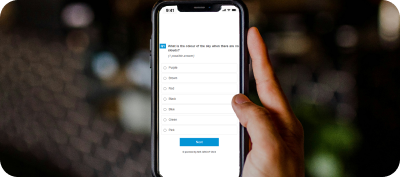We often discuss the value of ad campaign tests, but how effective are they really? And how can they be utilised to achieve quick and impactful results?
The Power of Testing CampaignsTesting a campaign provides concrete and measurable outcomes. It's the most reliable way to clear any uncertainties about how a campaign will be received by the public and it aids in decision-making when faced with multiple options.
By conducting tests, we give the public a voice. It's the simplest way to ensure that a message is understood clearly without any confusion.
Recently, an agency came to us with an urgent request from their client who was torn between several car adverts.
Together, we pinpointed the ideal target audience and created a brief questionnaire. In just one day, the test was completed and within a few hours we received responses from 400 target audience members. Each respondent selected their favourite video and provided feedback on each advert.
After analysing the responses, one video emerged as the clear favourite across all age and income groups. Respondents felt its message was the most impactful and aligned best with the brand’s values.
Running tests before and after a campaign is essential to determine if an ad campaign has successfully increased brand awareness. Here are some key rules and tips:
- Avoiding Bias: The sample of respondents for the pre-test and post-test should be different to prevent biased results.
- Brand Awareness Questions: These should be asked in two ways—open-ended, to see if the brand is recalled spontaneously, and close-ended, alongside other brands, to gauge recognition. The close-ended questions should reflect the brands' visual identities to ensure clear associations.
- Consistency in Questioning: Questions should be consistent before and after the campaign to ensure unambiguous results. Changing the wording can invalidate the results.
- Physical Campaigns: For billboard adverts in busy areas, we target specific geographic locations exposed to the campaign, excluding those who wouldn’t see it.
- TV Campaigns: We might survey a broader group, considering the viewers' typical age and profile during the ad's broadcast.
- Digital Campaigns: Various methods track participants' navigation to check ad exposure. For instance, integrating a tracker in participants' browsers can determine if they saw the ad. This requires a large enough pool of participants to ensure a reasonable number of exposed respondents for interviews, making it an effective way to gauge an ad’s impact and recall.
In an era where ad-blocking tools are increasingly popular and consumers are highly engaged with brands, incorporating consumer opinions into marketing strategies is more important than ever. Why not let the consumer's voice guide your next marketing move?

 Back
Back
 2 mins
2 mins 





